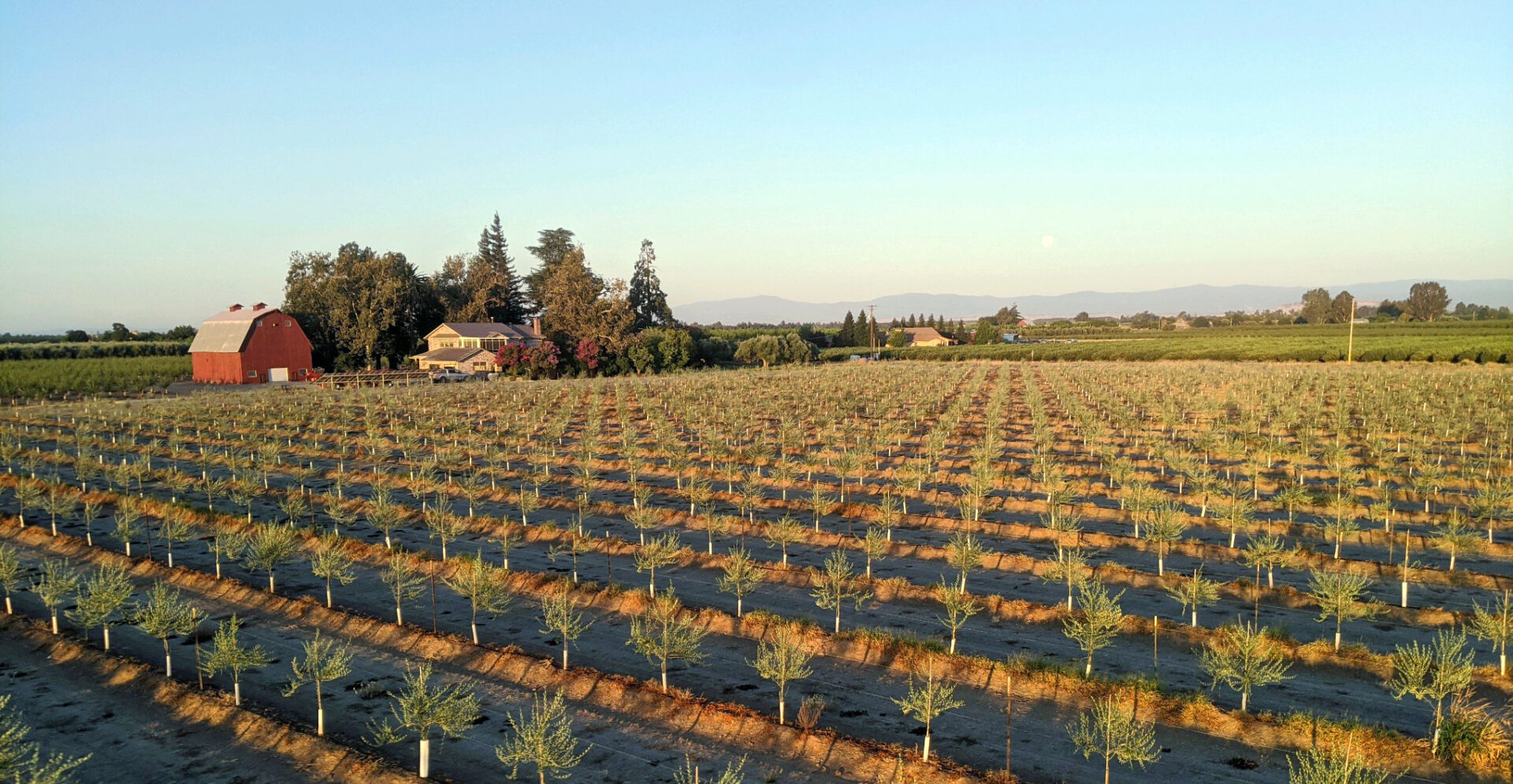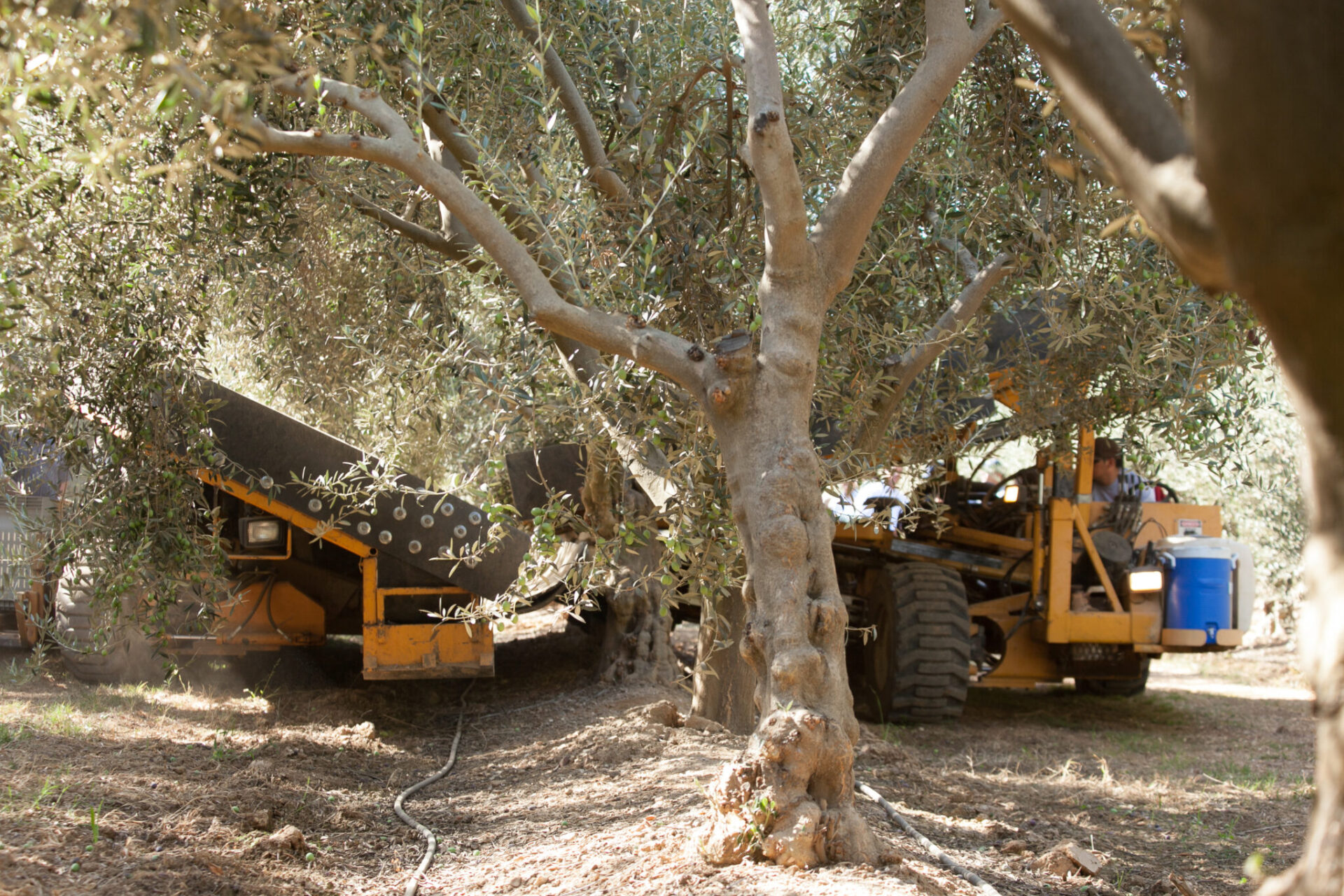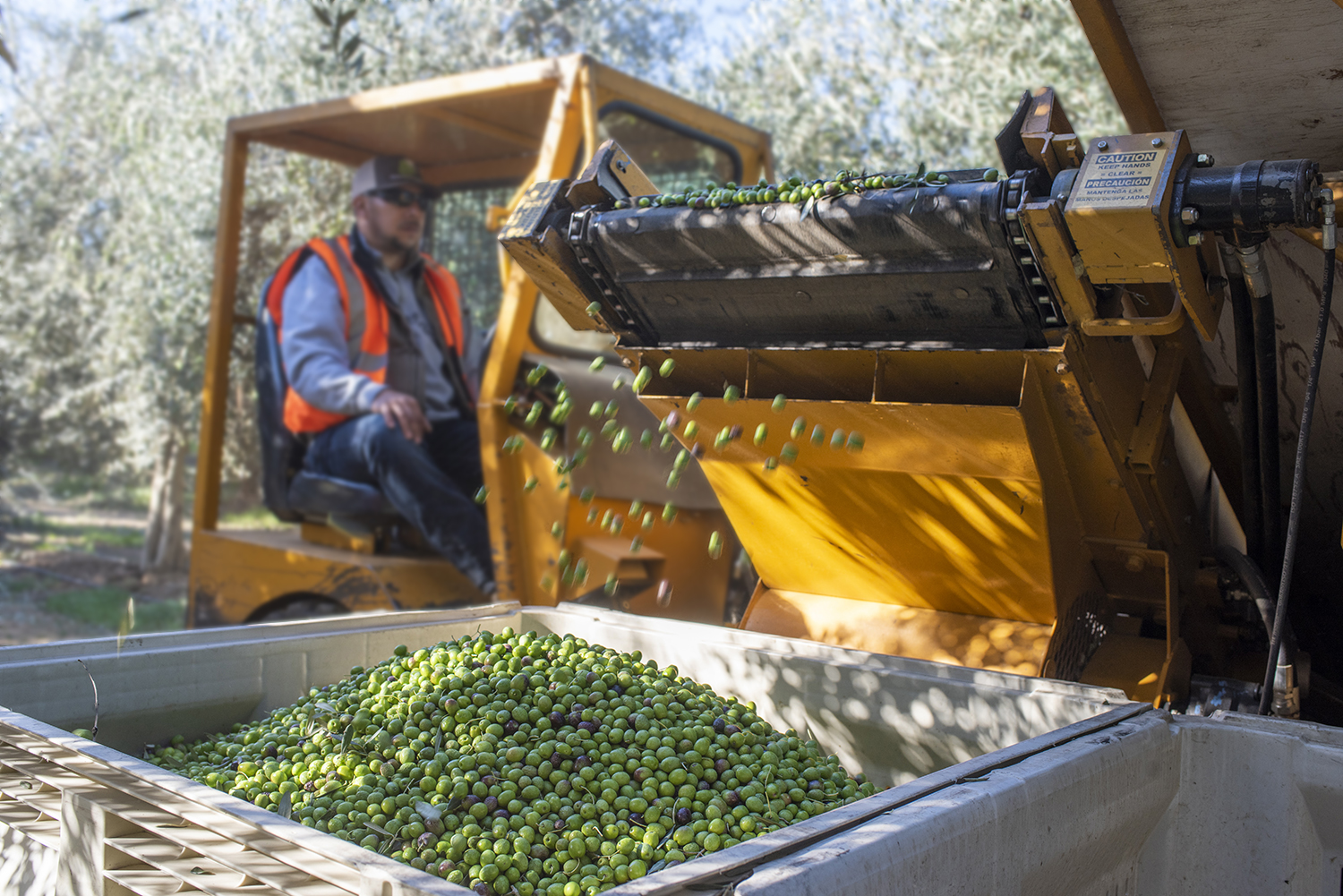
Diversification in agriculture improves economic stability by reducing financial risk and stabilizing farm income. Many California nut growers have diversified their operation with different nut crops, but another niche permanent crop to consider is table olives.
Commercial table olive production began in the early 1900s in California, but its Achilles heel has been labor. Everything from pruning to harvesting required hand labor. But that is changing. The 21st-century table olive orchard is mechanically pruned and harvested. This is a game changer for the industry, and it offers a unique diversification opportunity to nut growers.
“Diversification is, I think, really important in today’s world,” said Dennis Burreson, vice president for Musco Family Olive Company. “[Table] olives have the advantage that this is new going from hand harvesting to mechanically harvesting. It’s a transition, and transitions present opportunities for new people entering it.”
Mike Silveira, chairman of the Olive Growers Council of California, is a walnut and table olive grower in Glenn County. He sees table olives as a good crop to diversify with his walnut operation.
“I think you need to be diversified. Most of the guys have diversified into the nuts, whether it’s almonds or walnuts, but I think table olives themselves will offer a great opportunity,” Silveira said, adding now that they are mechanically pruned and are using a trunk shaker, this will alleviate the labor pressures.
Benefits of Olives
Burreson offered several benefits for growing table olives: In general, olives: Use less water; Grow well in a wide range of soils; Have minimal pests and disease; and are Mechanically harvest and pruned.
In addition to these benefits, Musco Family Olive Company is offering free Manzanillo trees to growers interested in planting a minimum of 40 acres configured for mechanical harvest. They are also offering growers long-term contracts.
“Our goal is to make table olives the crop of the future in California,” Burreson said.
Musco’s offer is a great deal, Silveira said. “It’s what’s needed. We do need to mechanize the [table olive] industry.
“I think Musco is totally committed to the California market, and the California growers appreciate that,” Silveira continued, adding there are still potential opportunities for mechanizing established trees, too.
Mechanical Harvest
Burreson has been successfully using mechanical harvest in his orchards for over a decade. “I converted an orchard 11 or 12 years ago that we’ve been mechanically harvesting for 10 or 11 years,” he said.
Table olives use two pieces of harvesting equipment. One side is the shaker and the other is the catch frame.
“The olives are shaken, dropped onto the conveyor belt and up into a bin,” Burreson said, adding it’s very compatible with pistachio and prune harvesters.
This also makes it feasible to hire custom harvesters, since olive harvest is after the prune and pistachio harvest.
“Commercial harvesters, I would say, are going to become a reality,” Burreson said, adding they are currently removing 75% to 85% of the crop with mechanical harvest.
“Along with mechanical harvesting, mechanical pruning is something that’s being utilized. There’s still, of course, some hand pruning that has to be done, but a lot of it can be mechanically pruned,” Burreson said.
Using a pistachio or prune shaker requires very little retrofit, Silveira said, so it would be a smooth transition for the industry.
The California Olive Committee has done some studies on mechanical pruning and the proper way to prune table olives to get the most advantageous harvest from a trunk shake, Silveira said.

Pests, Disease, Soil and Water
Compared to almonds, walnuts and pistachios, which have several pests and diseases, table olives have minimal problems. Olive Fruit Fly (OLFF) is the main pest, and there are chemical treatments for controlling it. The main disease is olive knot, which is managed with copper treatments.
Olive knot is more problematic in the northern versus the southern part of the state.
“In the southern part of the state, olive knot is not really an issue. It tends to be very minor down there. Conversely, in the northern part of the state, it’s more of an issue,” Burreson said, attributing the difference between the two regions to a wetter climate further north.
“We do use minimal plant protection products, and that’s an added advantage,” Silveira said, whereas nut crops today have multiple sprays from insecticides to fungicides.
The California Olive Committee is pursuing additional plant protection products for olive knot, Silveira said.
Burreson said table olives need well-drained soil, but don’t need Class I or II soils to do well.
Silveira agreed. “As long as it’s well drained soil, you’re in pretty good shape. And as long as you feed those olives, feed them with the proper nutrients, you’re going to be fine.”
“Table olives are more drought-tolerant…They use less water, which is important in the state,” Burreson said.
Longevity
Before mechanization, olive trees were in the ground for hundreds of years. Currently, it’s unknown if mechanization will reduce the longevity of the tree, Silveira said, but it wouldn’t be any less than an almond tree. He believes growers will still get the longevity out of them, he added.
“I’ve seen olives that have been abused, and they seem to handle it. If you go back with kid gloves and water them and take care of them, they seem to come back,” Silveira said, adding he thinks there’s a good chance that table olives will continue to have longevity even with mechanization.
Olives by and large are a durable crop when they have sufficient water and fertilization as well as OLFF treatment, Silveira said.
“We do get into some alternate bearing, but we can cure that either through pruning or olive thinning so they’re pretty consistent,” Silveira said, adding the rate of return compares as good as or better than nut crops.
These new plantings for mechanized table olives would be high-density acreage—200 to 250 trees to the acre or more, and 10 to 15 tons to the acre is feasible for mature trees, Silveira said.
The one downside to table olive production was labor, but converting to mechanization has made that a moot point, Silveira said.
With the tariffs that went in, processors will eventually be able to pick up some of the lost food service market, especially as the industry moves to mechanization, and they will be able to recover that market, Silveira said.
Table olives are a niche market, Silveira said. He estimates the industry needs somewhere in the range of 80,000 to 90,000 tons annually and said that it’s a finite market.
“I think if you’ve got the right soil, you’re looking for some diversification and you want a tree crop that can be mechanized were now we’ve proven that olives can be mechanized, this could be a good alternative,” Silveira said.
Burreson said there has been a lot of interest from growers about Musco’s offer of trees and contracts. For more information, go to www.milliontrees.com.











